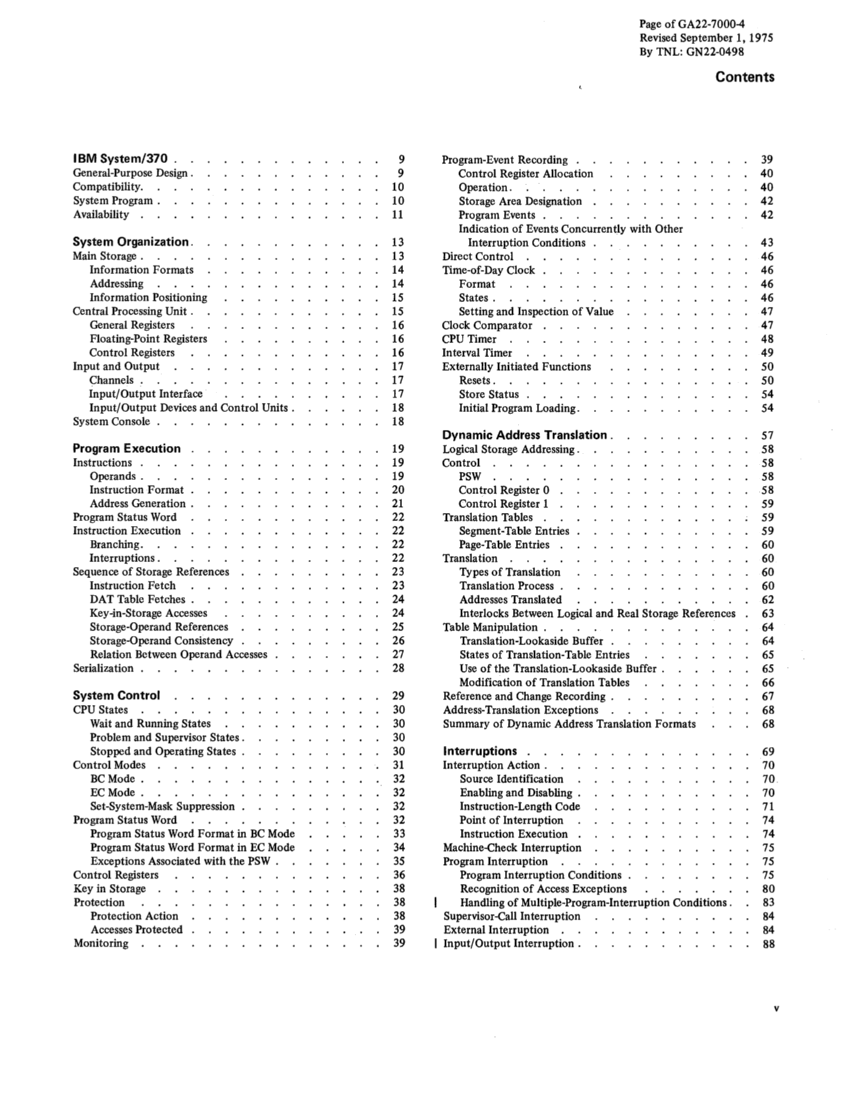Page ()f GA22-7000-4 Revised September 1, 1975
By TNL: GN22-0498
Decimal Instructions describes in detail the in
struetions provided by the decimal feature.
Floating-Point Instructions contains detailed de
scriptions of the instructions provided by the
floating-point feature and by the extended-precision
floating-point feature.Alachine-Check Handling describes the Syst
1 em/370 mechanism for detecting, correcting,
and reporting machine malfunctions.
Input/Output Operations explains the programmed
control ofI/O devices by the channel and by
theCPU. It includes detailed descriptions of the I/O instructions, channel command words, and other I/O control formats.
System Console describes the basic manual func
tions and controls available for operating and con
trolling the system.
The Appendixes include:• A list of the System/370 features • A discussion of certain functions that differ
fromSystem/360 • Lists of the instructions arranged in several
sequences• Summaries of important formats and of condition
code settings• Table of the powers of 2 • Tabular information helpful in dealing with hexa-
decimal numbers• An EBCDIC chart • Information about number representation • Instruction-use examples
Largely because the manual is arranged for refer
ence purposes, certain words and phrases appear, of
necessity, earlier in the manual than the principal
discussions explaining them. The reader who en
counters a problem of this sort should refer to the
index, which will indicate the location of the key
description.
By TNL: GN22-0498
Decimal Instructions describes in detail the in
struetions provided by the decimal feature.
Floating-Point Instructions contains detailed de
scriptions of the instructions provided by the
floating-point feature and by the extended-precision
floating-point feature.
1 em/370
and reporting machine malfunctions.
Input/Output Operations explains the programmed
control of
the
System Console describes the basic manual func
tions and controls available for operating and con
trolling the system.
The Appendixes include:
from
sequences
code settings
decimal numbers
Largely because the manual is arranged for refer
ence purposes, certain words and phrases appear, of
necessity, earlier in the manual than the principal
discussions explaining them. The reader who en
counters a problem of this sort should refer to the
index, which will indicate the location of the key
description.










































































































































































































































































































































